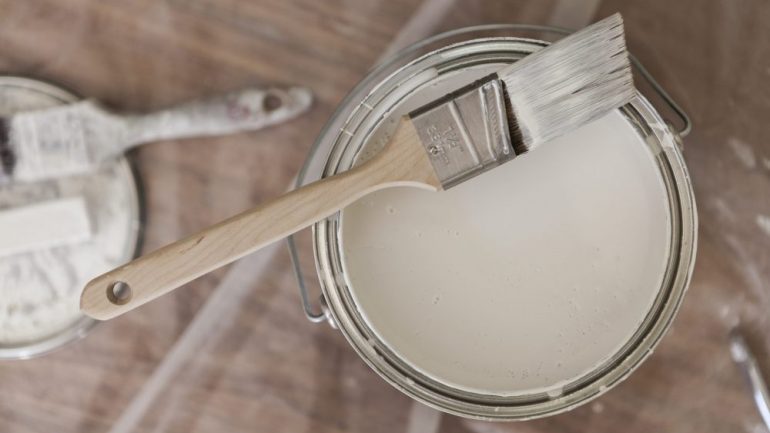A new generation of paints gives you the rich colors you want without the pungent smells of traditional paints. Known as low-VOC paints, they are safer for the environment and your health. Let’s learn more.
What are VOCs?
Volatile organic compounds (VOCs) are chemicals in traditional paint that contribute to the strong smell you associate with a fresh paint job.
The word volatile means the chemical evaporates at room temperature. Organic simply means it contains carbon molecules, whether it is a natural or synthetic material. These elements are combined with a resin in the paint that causes it to adhere to the surface being painted. VOCs are found not just in paints, but in many building materials and household products.
Not all VOCs are toxic, but some can be and produce pungent off-gassing smells when used. Environmental studies have shown that the interiors of many buildings have as much as two to five times the levels of VOCs found outdoors.
What are low-VOC paints?
Advances in chemistry have made it possible to create paints that are low in VOCs. The Environmental Protection Agency considers paints to be low VOC with up to 250 g/l for water-based paint and 380 g/l for oil-based paint. Non-governmental organizations such as Green Seal set more rigorous standards for low-VOC paints. There is no established industry standard, but low-VOC paints generally contain less than 150 grams of VOCs per liter, and ultra-low-VOC paints have less than 50 grams. There are even paints known as zero VOCs. Although in reality they actually contain VOCs, the level is less than 5 g/l.
Advantages and disadvantages
Low- and no-VOC paints have evolved so that they are durable, provide good coverage and dry quickly with a nice variety of colors. Several manufacturers carry them, including Behr, Benjamin Moore, Sherwin Williams, Concho and others.
Keep in mind that the reduction of VOCs doesn’t mean that the paint is entirely toxin free. Many low-VOC paints still contain other chemicals that can be toxic. For example, some of the color-tinting chemicals that are added at the store can also be harmful. Consult your paint professional to know exactly what you are buying.
Alternative paints
The safest paints of all are ones made with completely natural ingredients such as milk, beeswax and natural latex. These paints are not readily available in stores, so you will probably have to shop for them online. Perhaps the best low-VOC alternative is ceramic-based paint, which contains tiny ceramic beads that make the paint stain resistant and very durable. Ceramic-based paint also washes well.
Standard bearers
The testing agency known as Underwriters Laboratory owns an industry-independent organization called the Greenguard Institute, which evaluates and promotes environmentally safer products for both industry and consumer use. Its online catalog lets you shop products by category to find environmentally safe consumer goods.
Cost of low-VOC paints
Do you have to pay a premium to buy low-VOC paint? Perhaps surprisingly, the answer is no. Low-VOC paint ranges from $12 to $50 per gallon, prices that are comparable to traditional paints. No-VOC paints are priced a little higher.
Related – 9 Essential Tools for the DIY Painter


